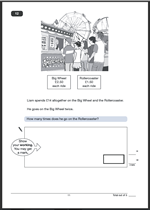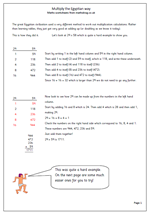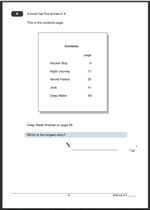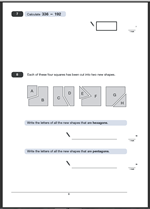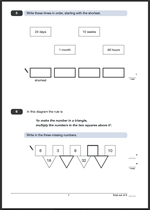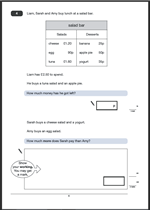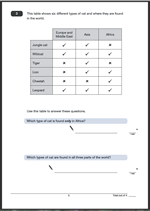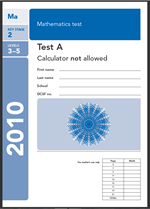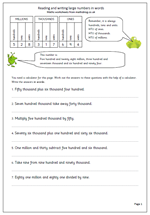 A calculator is needed for this worksheet, but this does not make it any easier. First of all the calculation is written in words rather than numbers and needs to be read correctly in order for it to be keyed into the calculator correctly. The calculator comes up with the answer in digits and this has to be converted to words in the answer.
A calculator is needed for this worksheet, but this does not make it any easier. First of all the calculation is written in words rather than numbers and needs to be read correctly in order for it to be keyed into the calculator correctly. The calculator comes up with the answer in digits and this has to be converted to words in the answer.
Many children, and indeed adults, find it very difficult to read large numbers correctly. The solution is to section the digits off into groups of three, starting with the units.
The first group of three is read as hundreds, tens and units.
The second group of three is read as hundreds, tens and units of thousands.
The third group of three is read as hundreds, tens and units of millions.
So 528528528
is five hundred and twenty eight million, five hundred and twenty eight thousand and five hundred and twenty eight. Easy!
This page can be found in the Year 6 Understanding Number category.
Read and write large numbers in words
